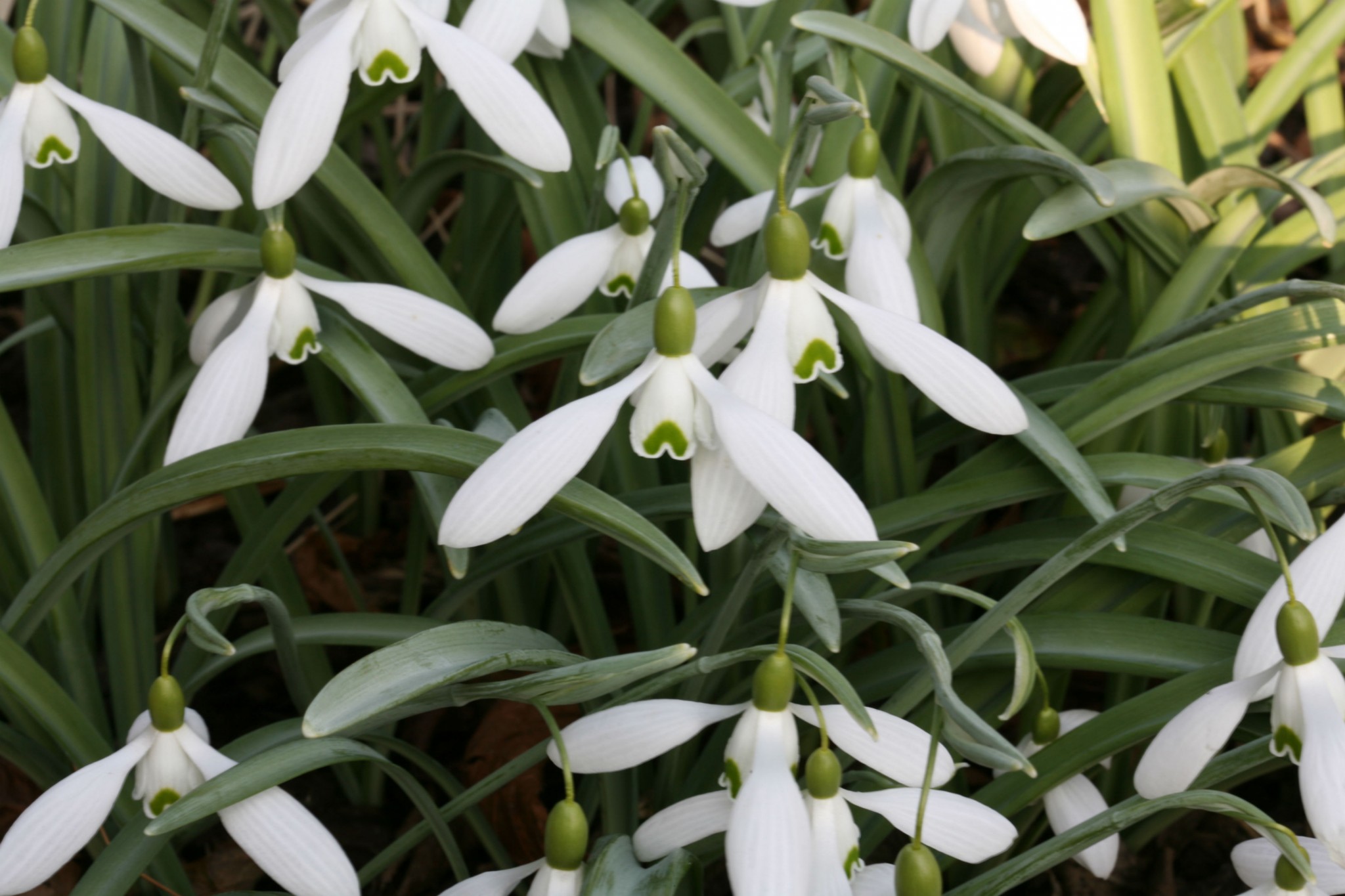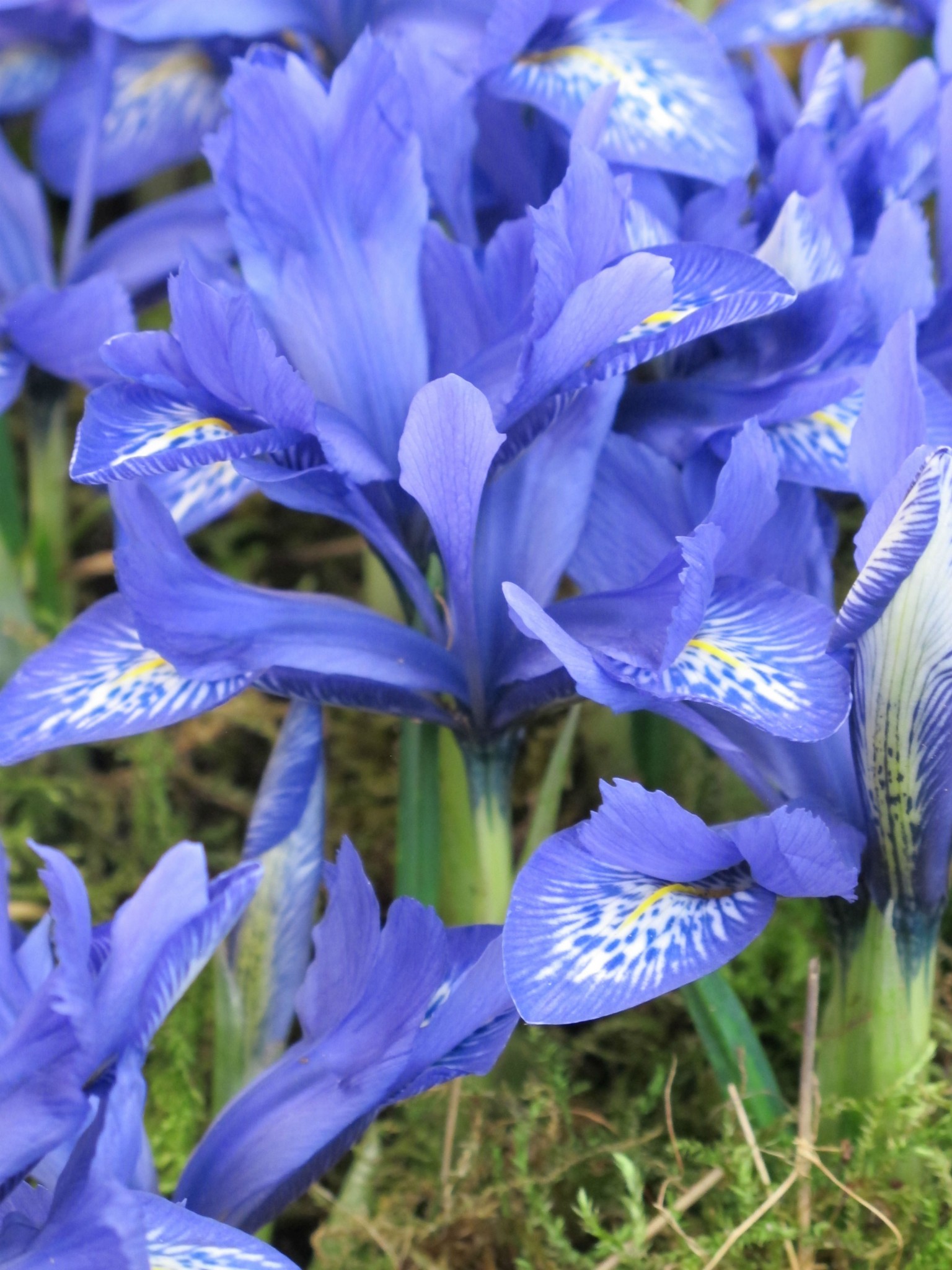
The Best Beloved has made a declaration. Apparently I have 91 named snowdrops that need planting and 30 of these are bedded into part of the vegetable bed, his vegetable bed, and “they will need planting first” he intones with great authority. I have acquired these treasures in the last few months, from various sources, and I feel rather ashamed. I know that I am a snowdrop nut, but having my obsession quantified by the number 91 has thrown it into sharp relief. You see, I know that many of the really expensive ones I’ve bought bulk up really slowly and therefore make little impact on the garden. That’s why they’re expensive of course. They’re ‘miffy’, that’s gardening-speak for tricky to grow. And this keeps the price high.
It’s the easy old favourites ( obtainable from Avon Bulbs – www.avonbulbs.co.uk) that turn a garden white year after year and create the spectacle. ‘Lady Beatrix Stanley’, a double with very delicate dots on the outers, shines in my garden and I’ve always got plenty to pass round. It was almost certainly collected by Lady B herself, in the wild, when this was allowed. She went plant hunting with her great friend E.A. Bowles, the man who coined the term galanthophile. Lady Beatrix, who died in 1944, lived at Sibbertoft Manor in Leicestershire. However the snowdrop wasn’t named after her until 1981. She was interested in all bulbous plants and there is a miniature colbalt-blue, spring-flowering iris that also bears her name. It’s another winter treasure.
What do Snowdrops Like?
They have an affinity with limestone and alkaline soils, so they grow well in certain counties including Berkshire, Gloucestershire, Northamptonshire and Shropshire.
Like all bulbs, they need good drainage, so if you’re on clay improve the drainage by adding grit, or plant them in a raised bed. Many grow in quite damp places in the wild, but the water percolates through the ground so it’s constantly moving.
Snowdrops do not need deep shade because many snowdrops, especially those with greyer leaves, grow naturally in more open positions. They do well under roses for instance.
You can buy ready grown potfuls from nurseries, such as Avon Bulbs, and plant them into the ground carefully. These bulbs will have well-established root systems because the dry bulbs were potted up in August.
You can also buy dormant bulbs in summer and pot them up yourself.
Or you can by the very common snowdrop, G.nivalis, in the green after it has flowered. Suppliers can be usually be found on the net.
Feed your snowdrops after flowering. You can use a water-on soluble plant food or sprinkle on a slow-release feed such as Vitax Q4.
There are 22 or 23 species of galanthus, depending on who you believe, and they’re found in Europe and the Middle East, from the Spanish and French Pyrenees in the west through to the Caucasus and Iran in the east, and south to Sicily, the Peloponnese and the Aegean, Turkey, Lebanon and Syria.
The commonest species in Britain, Galanthus nivalis, is now known to be introduced rather than native as was previously thought.
Ten Easy Snowdrops
If you’re new to snowdrops start with these tried and tested ones which bulk up and flower year after year – including ‘Lady Beatrix Stanley’.

Galanthus ‘Neill Fraser’
This is a vigorous single snowdrop that produces masses of flower. It came to E. A. Bowles from a Scottish botanist called Patrick Neill Fraser of Murrayfield in Edinburgh. Scotland has a special association with snowdrops because many Scottish regiments fought in the Crimean War. They brought back bulbs afterwards.
Galanthus ‘Magnet’
This is a substantial single snowdrop that bulks up easily. The flowers are held on a long stalk, technically called a pedicel, and this makes the flowers appear to dance and tremble. James Allen of Shepton Mallet in Somerset named it in the 1890s.
Galanthus ‘Atkinsii’
A tall snowdrop that flowers early, so place it at the back. It was named after James Atkins, who had a nursery in Northampton, and we know it was collected in Naples. Atkins moved to Rose Cottage in Painswick.
Galanthus ‘Lapwing’
Found in Lapworth in Warwickshire in 1997 by Phil Cornish, a Gloucestershire galanthophile. The single splays its outers wide, showing off a cross-shaped mark that fades away at the top.
Galanthus ‘Ophelia’
One of the Greatorex doubles raised in the 1940s. These neat doubles, which are tall with dark-green markings, were almost always given Shakespearian or classical names from Greek mythology, with the exception of ‘White Swan’. Heyrick Greatorex grew up at Rowneybury House, which later became David and Victoria Beckham’s Beckingham Palace. Greatorex was a decorated First World War hero, but he spent his latter years in Brundall. His garden is now in the care of Blofield & District Conservation Group. The green-tipped snowdrop, ‘Greenfinch’, was discovered there by Richard Hobbs in 1990.
Galanthus ‘Blewbury Tart
An unusual-looking snowdrop first found in an Oxfordshire churchyard by Alan Street of Avon Bulbs. It has a central rosette that is almost completely green and it stands upright, rather than drooping, so it’s very coquettish.
Galanthus ‘Godfrey Owen’
Found in a Shropshire churchyard by the late Margaret Owen in 2001, this is already an iconic snowdrop due the fact that it has six outer segments rather than three. It bulks up well and flowers early in the season.
Galanthus ‘Viridapice’
A fabulous snowdrop, with green-tipped outers that appear consistently. It was found a hundred years ago in Northern Holland and was painted by E.A. Bowles in 1916, with the Van Tubergen name by its side.

Galanthus ‘Trumps’
The pixie-hatted snowdrop ‘Trym’ is a plicate snowdrop, which indicates that the leaves have a small pleat at the base. It is slow to bulk up but has produced some vigorous seedlings and trumps is the best clump-former of all.
Galanthus elwesii
A glaucous-leaved snowdrop with bold green markings that vary. There are lots of named forms including ‘Comet’, ‘Maidwell L’ and ‘Mrs Macnamara’. These enjoy a bright position.
How to Start Them Off
Most of the easy snowdrops can be planted straight into the ground. However, if they’re failing to grow for you it’s worth giving them some TLC early on.
Invest in some square waterlily pots, about 4 inches in diameter. These black mesh pots are usually available from garden centres. Arm yourself with some coarse grit, some perlite, some slow release fertiliser and some John Innes no 3. This is a loam-based compost that suits snowdrops. Peat-based ones don’t.
Mix together a 50/50 mixture of perlite and grit and then add roughly double the amount of compost and finally mix in some slow release plant food, such a osmocote, observing the directions. Make sure it’s a light airy consistency.
Part fill the waterlily pot and then carefully remove your snowdrop from its pot and place your snowdrop in the waterlily pot. Backfill with the your enriched mixture, before watering well. This pot can be plunged into the ground and it will get going and also be safer from scratching cat’s paws!
To Divide or Not
Only divide clumps if they begin to go backwards and bear less flower because lots of snowdrops like growing cheek to jowl.
Technically the best time to do spilt them is midsummer, when the bulbs are dormant. In practice most lift their bulbs and divide in early March. The bulbs must feel firm to the touch and not pappy and empty though.



